Flemish School of Painting
(a) The Van Eycks and their School
Hubert and Jan van Eyck, who were painting at the beginning of the 15th century, were artists of the highest rank; with their unrivalled technical skill, their exquisite finish, and the splendor of their colour, which in some respect even surpassed those of any of the Italian painters.
Probably no other artists ever lavished time and patient labor quite to the same extent to which Jan van Eyck did upon some of his works, such as the Arnolfini and other portraits in the National Gallery (see fig. 28), and the Madonna with the loveliest pictures in the world, both as a figure painting and from its exquisite miniature landscape and town in the distance, all glowing with the warm light of the setting sun.
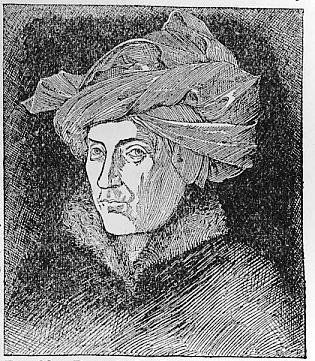
Fig. 28 -- Portrait, by Jan van Eyck; 1433. (National Gallery.)
The elder Van der Weyden was a most able pupil of the Van Eycks; he occasionally practiced a very different technical method from that usually employed in Flanders, -- that is to say, he painted in pure tempera colors on unprimed linen, the flesh tints especially being laid on extremely thin, so that the texture of the linen remains unhidden. Other colours, such as a smalto blue used for draperies, are applied in greater body, and the whole is left uncovered by any varnish. A very perfect example of this exists in the National Gallery (see fig. 29).
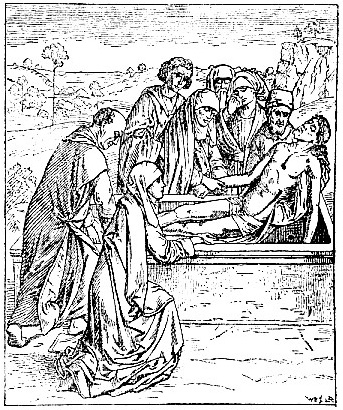
Fig. 29 -- The Entombment of Christ, by Van der Weyden the elder, painted in tempera on unprimed linen. (National Gallery.)
The special method used with such success by the Van Eycks and their school was to paint the whole picture carefully in tempera and then to glaze it over in transparent oil colours; the use of oil (Footnote 439-1) as a medium was common in the 13th century and even earlier (see MURAL DECORATION).
To the school of the Van Eycks belong a number of other very talented painters, who inherited much of their marvelous delicacy of finish and richness of colour; the chief ofthese were Memling, Van der Meire, and the younger Van der Weyden, to whom is attributed No. 654 in the National Gallery (see fig. 30). The colour of this lovely picture is magnificent beyond all description. Quintin Matsys (Massys) and Gheerardt David also produced works of great beauty and extraordinary finished execution. (Footnote 439-2)
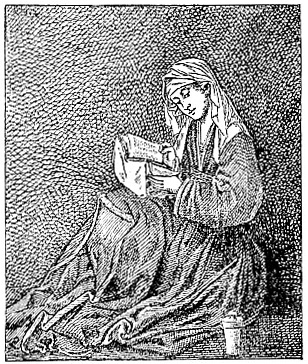
Fig. 30 -- St Mary Magdalene, attributed to the younger Van der Weyden. (National Gallery.)
(b) Later Flemish Art
The beginning of the 16th century Flemish art began to lose rapidly in vigour, a weaker style being substituted under the influence of Italy. To this period belong Mabuse, Van Orley, and Patinir, who appear to have been special admirers of Raphael’s latest manner.
In the latter half of the century Antonij Mor, usually known as Antonio Moro, was a portrait painter of the very highest rank. A portrait of Queen Mary of England at Madrid, and one of a youth of the Farnese family at Parma, are real masterpieces of portraiture. He spent some time in England. The Breughel family in the 16th and 17th centuries produced feeble works finished with microscopic detail.
Rubens and his pupil Vandyck in the 17th century were among the greatest portrait painters the world has ever seen (see figs. 31 and 32) and had many able followers on the Continent and in England.
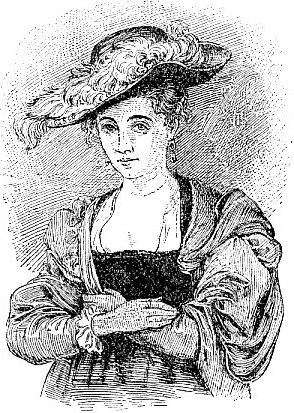
Fig. 31 -- Portrait by Rubens, known as the "Chapeau de Poil". (National Gallery.)
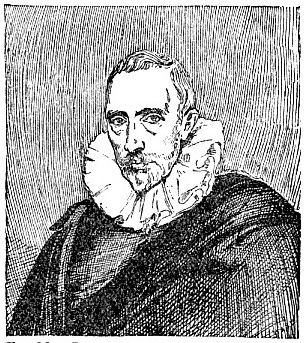
Fig. 32 -- Portrait of Cornelius Van der Geest, by Vandyck or Rubens. (National Gallery.)
Footnotes
439-1 Elaborate directions for painting in oil are given by the German monk Theophilus (Sched. div. art., 37, 38), who wrote in the 12 century.
439-2 Though the elder Van der Weyden and other Flemish painters of his time visited Italy, the Italian style of painting appears to have had very little influence on their vigorous works. The weaker Flemish painters of the 16th century, on the contrary, were close imitators of the Italians and produced pictures of a rather feebly pretty type.
Read the rest of this article:
Schools of Painting - Table of Contents




